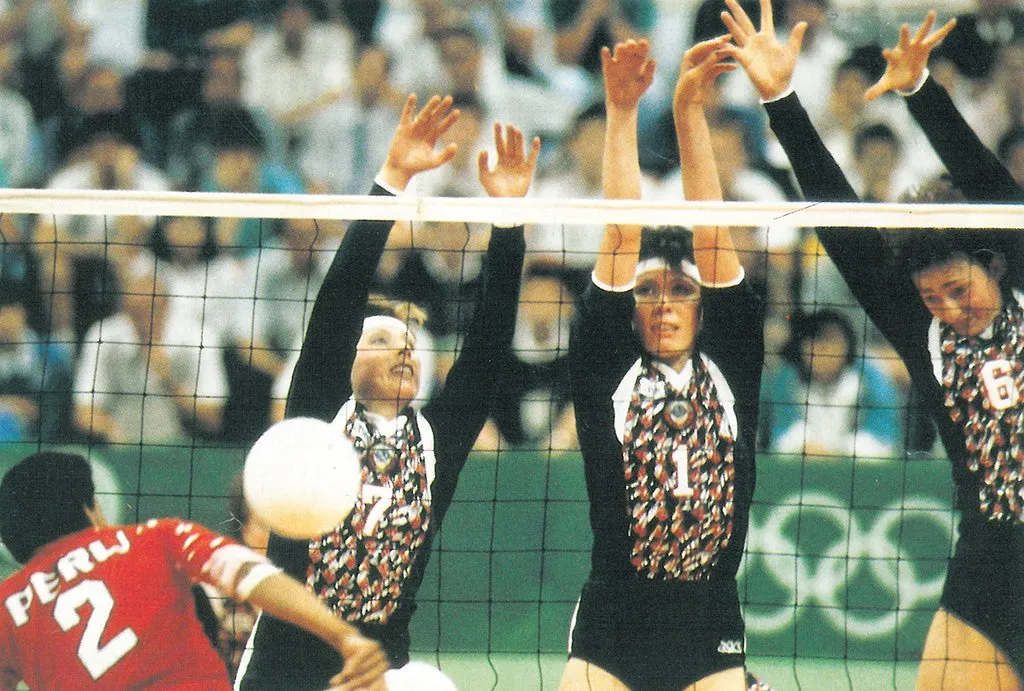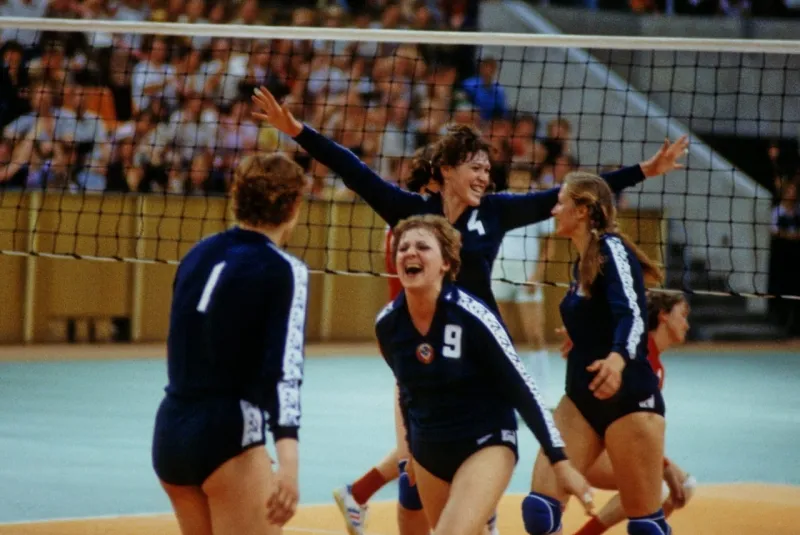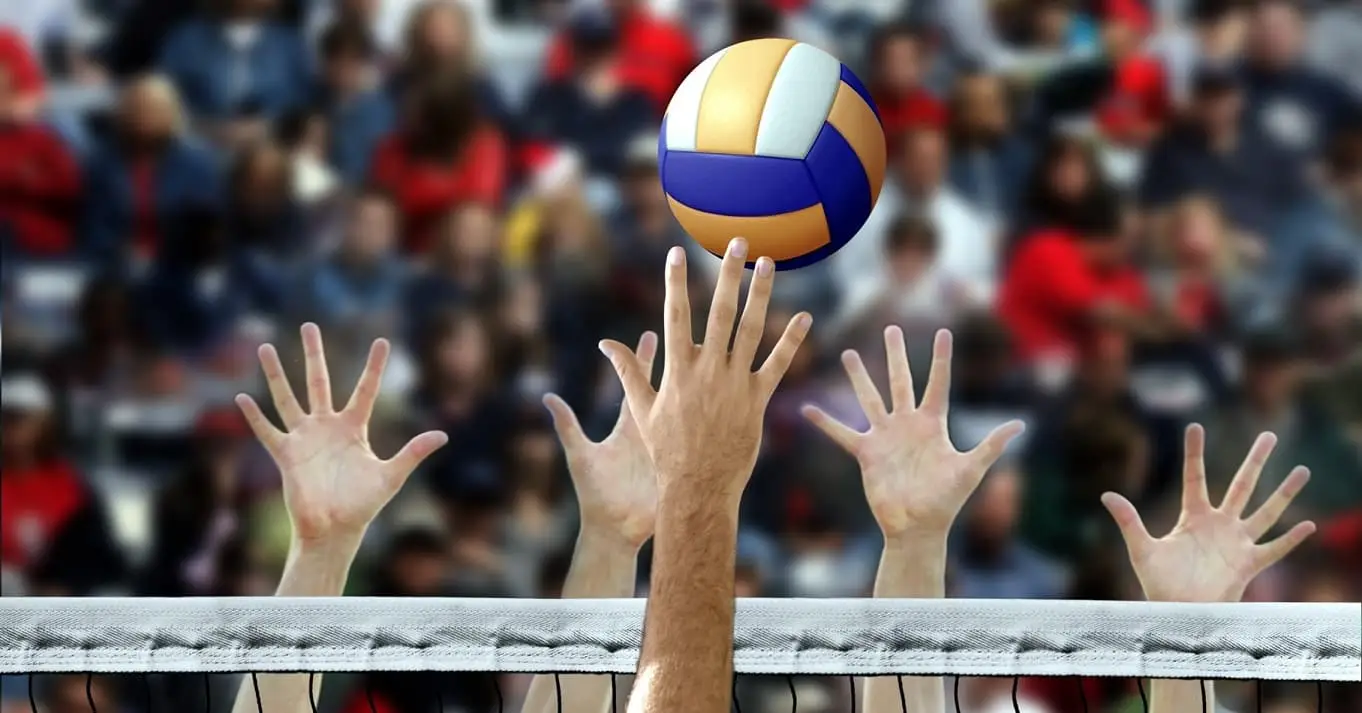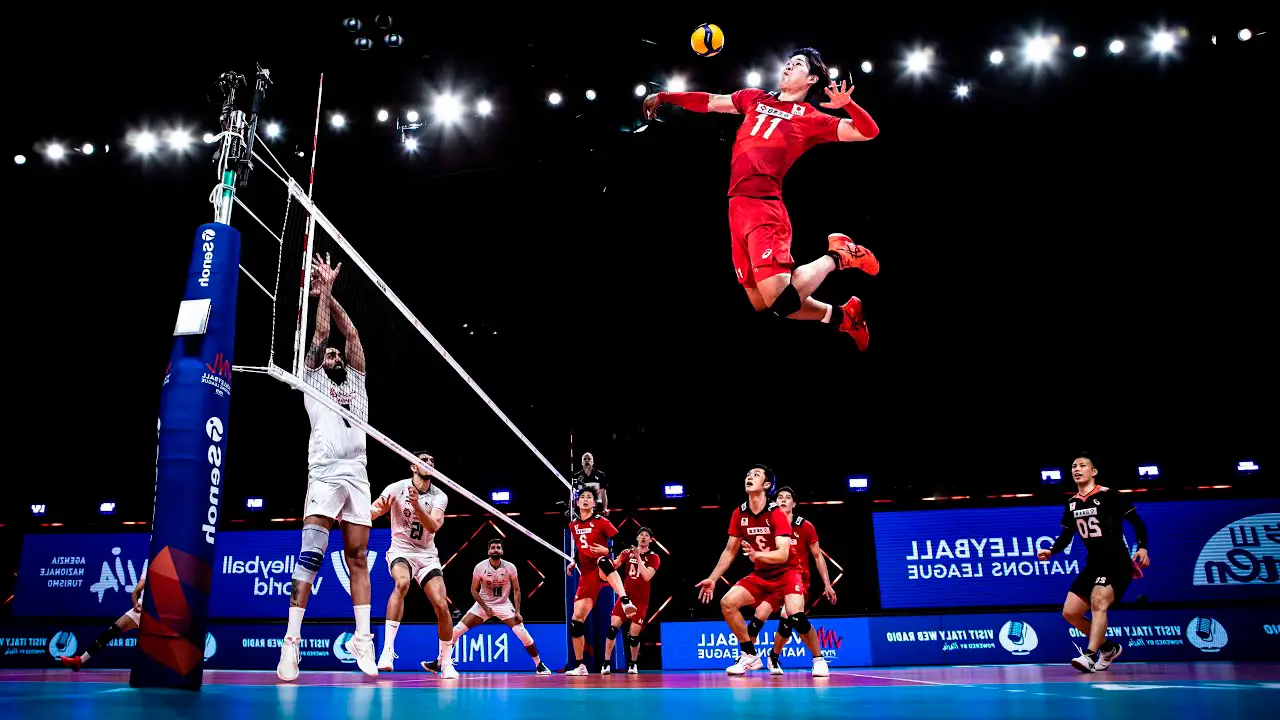Volleyball is a symbol of collective spirit, mass involvement and teamwork in the USSR. The sport became truly popular and one of the most important movements for hundreds of thousands of athletes across the Union.
How did volleyball in the USSR make its way from small halls to international arenas where the national team shone on the podiums? We’ll tell you in this article.

The beginnings and emergence of volleyball in the USSR
It all began in the 1920s, when volleyball first appeared on the streets and in the courtyards of the cities of the USSR. Unlike many other sports, it quickly attracted attention as it was easily accessible. A simple net, a ball and a group of friends were all that was needed to get started.
The first competitions were held on the courts of cultural centres and sports clubs, where small amateur teams were formed. Soviet volleyball quickly won the hearts of young people. In 1932, the first official tournament was held in Moscow, which became the starting point for the development of the sport in the country. From the very beginning, volleyball became the epitome of mass participation in the USSR – anyone could take part, regardless of age or profession.
Rise to the peak of popularity and first victories
In the mid-1940s, the format became increasingly popular. After the Great Patriotic War, volleyball in the USSR became a means of uniting society and restoring the spirit and physical fitness. Hundreds of sports sections were founded in which workers and students trained. Industrialisation also played an important role: factories and businesses set up their own teams and organised competitions.
The state supported the development of sport and used it as an instrument to promote a healthy lifestyle and patriotism. In 1953, the number of volleyball sections exceeded 10,000, demonstrating the great interest in the sport. The popularity of volleyball in the USSR grew from year to year, attracting new generations of athletes.
Soviet national team and international successes
The first USSR national volleyball team was founded in 1949, and a few years later the team entered the international arena. In 1952, the team took part in the first World Championship and won silver, which was a great success for the young team. From that moment on, a true era of dominance began.
The Soviet volleyball players not only won, but also set the tone for the development of international sport. Among the star players of this era, Yuri Chesnokov and Georgi Mondzolevsky stand out – their contribution to the team’s successes can hardly be overestimated. They brought home medals from European and World Championships and acted as true leaders on the court. Volleyball in the USSR gained worldwide recognition thanks to the physical preparation of the players and the unique team tactics developed by the coaches.
The role of the coaches
 It is impossible not to mention the legendary coaches responsible for the success of the national team. Yuri Kleshchev and Valentin Silkis are names that have written golden pages in the history of Soviet volleyball. They developed unique training methods and emphasised teamwork. Kleshchev was the first to use the so-called ‘safety net system’, in which each player knew not only his position but also the tasks of the other team members. This strategy made the team flexible and unpredictable on the court.
It is impossible not to mention the legendary coaches responsible for the success of the national team. Yuri Kleshchev and Valentin Silkis are names that have written golden pages in the history of Soviet volleyball. They developed unique training methods and emphasised teamwork. Kleshchev was the first to use the so-called ‘safety net system’, in which each player knew not only his position but also the tasks of the other team members. This strategy made the team flexible and unpredictable on the court.
Achievements and techniques of the USSR volleyball coaches:
- Team tactics and team play. Kleshchev actively introduced training based on full understanding of the players. Each team member was obliged to know not only his tasks, but also the actions of his neighbours on the court, which allowed the team to act as a unit.
- Development of psychological stability. Valentin Silkis developed a special psychological training programme that helped the players to deal with the pressure during important matches. He simulated critical situations to get the players used to keeping a cool head.
- Emphasis on physical training. Both coaches introduced intensive physical training that included endurance exercises as well as specific drills to improve jumping and shooting power.
- Individualised approach to the players. Silkis placed great emphasis on individual work with each athlete and developed unique training programmes tailored to each player’s strengths and weaknesses.
- Analysing the opponents. The coaches actively analysed the opposing teams to identify weaknesses and exploit them as effectively as possible during the game.
Tournament history and unforgettable moments
The history of major volleyball tournaments shows how the USSR’s successes helped to strengthen its international position. Each competition in which the Soviet team took part became not only a sporting event, but also a demonstration of the country’s strength and cohesion. Victories in matches against strong opponents such as the United States and Japan emphasised the team’s preparation and perseverance. The successes in volleyball played an important role in diplomatic relations and created a positive image of the USSR on the international stage.
Volleyball tournaments
A particular success was the 1960 World Championship, where the Soviet team won gold by beating Czechoslovakia 3:1 in the final. This match took place in the Moscow stadium and the stands were filled to the last seat – tens of thousands of fans supported their team. Vyacheslav Zaitsev played at the highest level: every reception and every serve triggered a storm of applause. The tournament not only confirmed the strength of the national team, but also inspired thousands of young people to take up the sport of volleyball.

Legacy
 Volleyball in the USSR has left an indelible mark on the world history of sport. This sport became a symbol of perseverance and team strength. Even though times have changed and the USSR no longer exists, the legacy of Soviet volleyball lives on in everyone who picks up a ball and takes to the court, believing that sport is not just a game, but a story to remember.
Volleyball in the USSR has left an indelible mark on the world history of sport. This sport became a symbol of perseverance and team strength. Even though times have changed and the USSR no longer exists, the legacy of Soviet volleyball lives on in everyone who picks up a ball and takes to the court, believing that sport is not just a game, but a story to remember.
 en
en  ru
ru  de
de  ar
ar  es
es  hi
hi  fr
fr  nl
nl  it
it  pt
pt  el
el 



